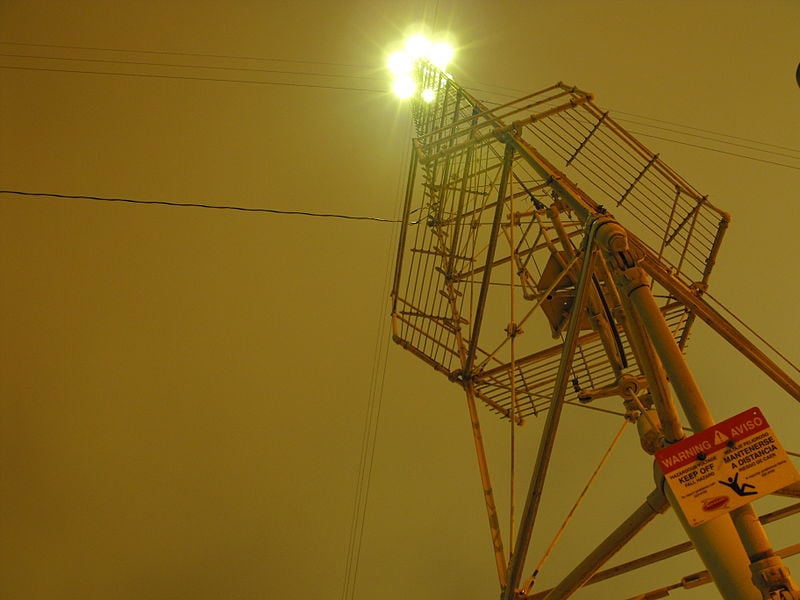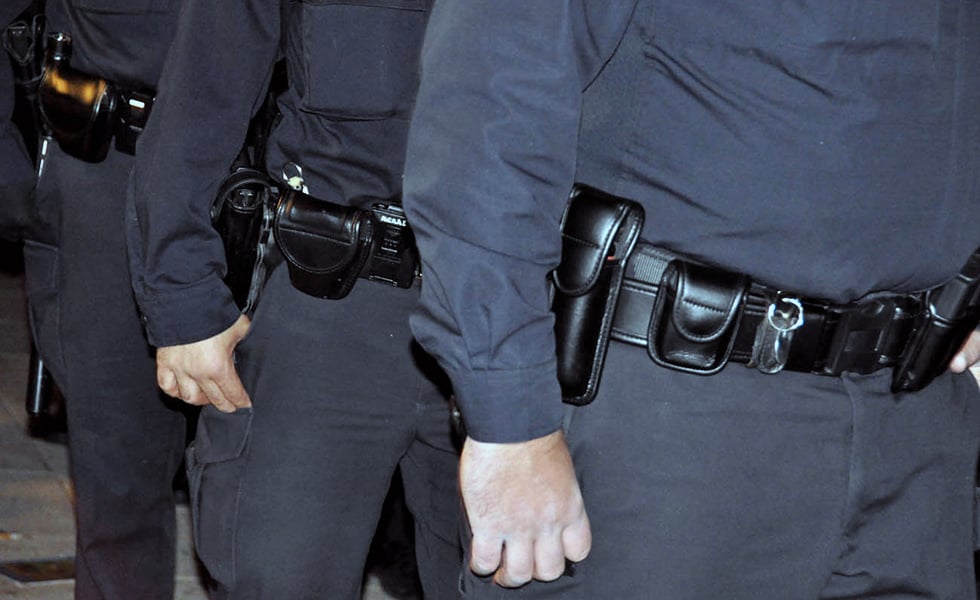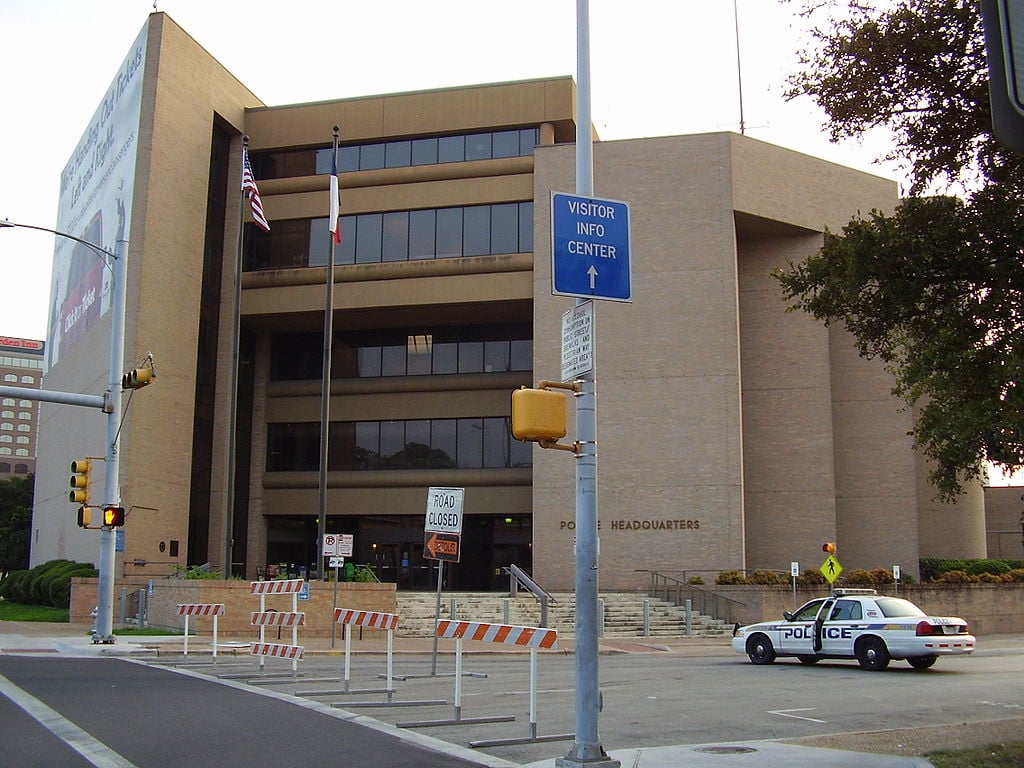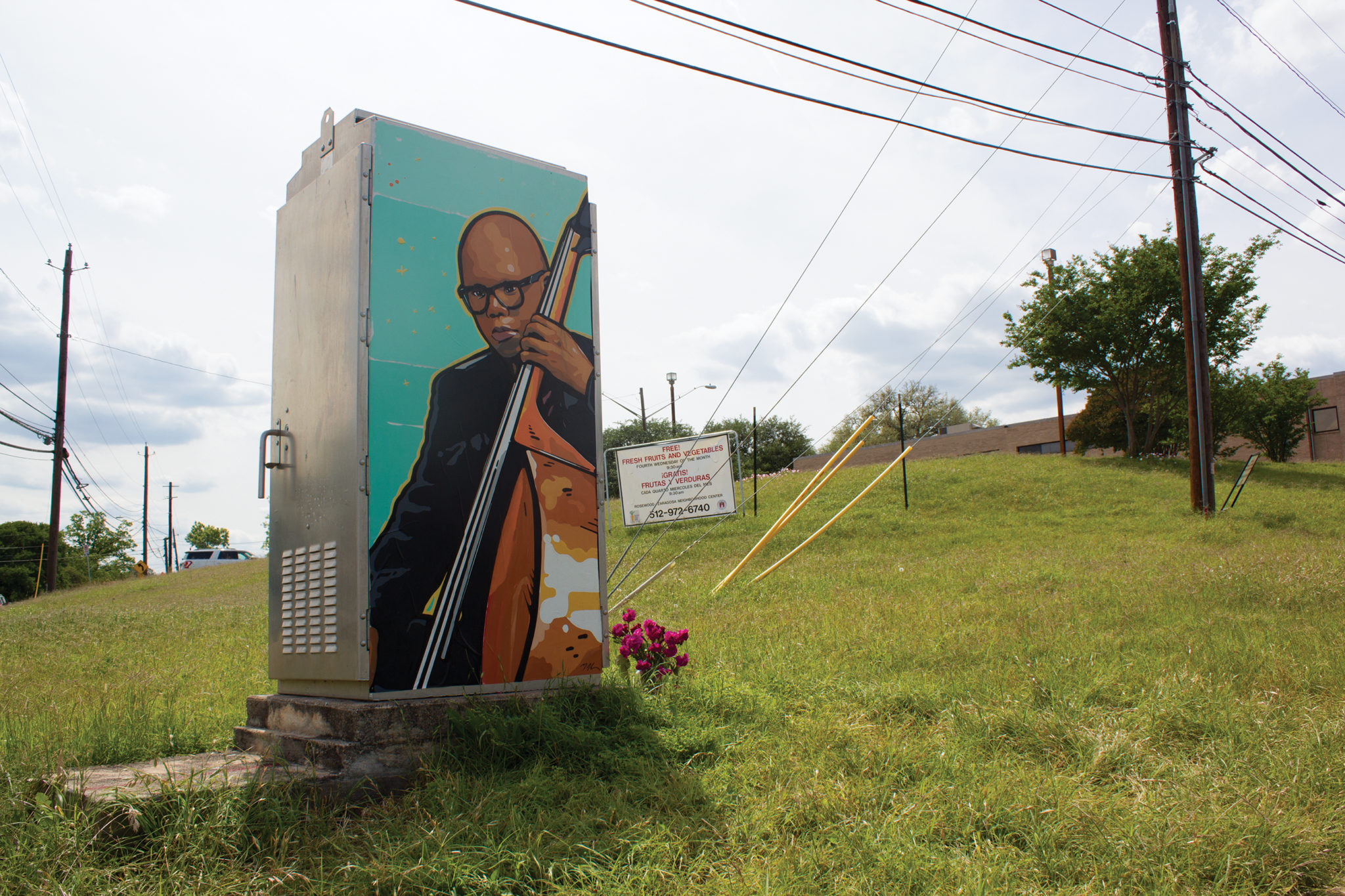
State of the Media: The Scene of the Crimes

A version of this story ran in the June 2015 issue.
Above: “Moonlight Towers,” were built in the late 19th century to cast crime-deterrent swaths of light across a then-gas-lit downtown.
I don’t know when you last found yourself appreciating the particular sights, sounds and smells of the stretch of Waller Creek that runs between Sixth and Eighth streets in downtown Austin, but if you’re like me, the answer is probably close to never.
Until, that is, this spring, when I was compelled by a bunch of hip media-types from San Francisco and New York City not only to venture into the urban drainage of Waller Creek but to peek into nooks and crannies I’d passed by without heed for years.
I was looking for a serial killer. Specifically, the man dubbed by the writer William Sydney Porter (who was better known as O. Henry, and who lived just blocks from Waller Creek) the “Servant Girl Annihilator,” a man who killed seven Austin women—five of them black women—and one man in 1884 and 1885.
My quest was part of a self-guided walking tour produced by Radiolab, the New York-based public radio program beloved by science nerds, and Detour, a walking tour app that uses GPS technology to guide iPhone-equipped listeners through San Francisco and now, for the first time, Austin.
Ellen Horne, executive producer at Radiolab, told me that her folks and the Detour crew decided to “meet in the middle” here in Austin and produce a show for March’s SXSW crowds. They swiftly stumbled upon the story of what many historians have called America’s—and maybe the world’s—first serial killer.
“I’m still haunted by this story,” Horne told me in a phone interview. So, I think, is just about everyone who delves into the dark history of these murders, which so frightened 19th-century Austinites that their legacy lives on even today with the city’s signature “moonlight towers,” erected to cast crime-deterrent swaths of light across a then-gas-lit downtown.
The tour begins in a downtown hat shop, where listeners are encouraged to take in the smells of old colognes. It then meanders along Waller Creek, into St. David’s Episcopal Church and its labyrinth, through the Driskill Hotel, into the parking garage that now stands at one of the murder sites, and concludes—I won’t give too much away—in a spot with a stunning panoramic view of downtown.
The murders were gruesome. Black women, mostly domestic servants, were mutilated, raped and killed by a still-unidentified assailant. An 11-year-old black girl also fell victim to the “annihilator,” as did a black man who was in a relationship with one of the victims.
But it wasn’t until two white women were brutally murdered in their homes that the city’s newspapers began to really take notice. Some things haven’t changed much in 130 years.
“The murders of the black victims are heinously under-covered” in the historical record, Horne told me. “That’s a real regret of ours.”
As a result, the tour skims lightly over an exploration of race relations in 1885-era Austin—a particular disappointment in light of Austin’s continuing unwillingness to grapple with its history of racism, the intentional ouster of its black community to the East Side in the early 20th century, and the current gentrification of that same area.
Atmospherically, though, the tour is a remarkable bit of time travel, accompanied at one especially moving point by a song from Austin’s own Shakey Graves that imagines the youngest victim’s revenge on her killer.
I’m powerfully skeptical of outsiders who attempt to tell Texas stories, but I have to give credit to the meticulous Radiolab research team; they spent weeks here testing and editing their story, which is narrated—at times perhaps overly folksily—by an actress playing a ghost of Austin past.
But even without resolution, the tour leaves a lasting impression with listeners who, I think, will see the city very differently after they’ve looked at it with century-old eyes.
Horne admits they approached the project with some “naïveté,” but they managed to produce not just an intriguing murder mystery, but an aural snapshot of a time well before Austin became the cultural and tech hub it is today.
“We really wanted to make this a story about the year and not the murders,” said Horne, who made the editorial decision not to play into the sensational and sexual gore fantasies that, as she put it, often accompany “obsession with serial killers.”
And while historians have some idea of who the “annihilator” may have been—a black man named Nathan Elgin who was shot by police in 1886—Radiolab keeps the tour’s ending ambiguous, having come to believe that the murders were not the work of just one person.
“The thought that it wasn’t one serial killer is much scarier,” Horne said.
But even without resolution, the tour leaves a lasting impression with listeners who, I think, will see the city very differently after they’ve looked at it with century-old eyes.


